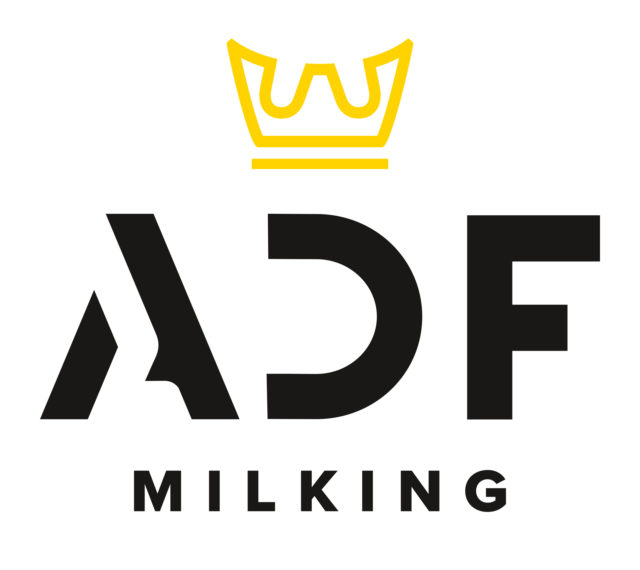This study, done in the UK, evaluated the nutritional value of a field bean (Vica faba, normally called faba bean). The authors designed the study to evaluate the effects of faba bean (FB) on cow performance and nutrient utilization in the diet of early lactation cows. They used 72 cows, from calving until 20 weeks of lactation.
The diet had three levels of FB from zero, 349 or 698 grams of FB per kilogram of concentrate. In the high treatment, FB replaced completely soybean meal, canola meal, corn gluten feed and wheat in the concentrate. FB has a moderate crude protein (CP) content (28%, dry matter) but has a relatively high starch content (40%, dry matter).
The authors indicate the inclusion of FB in the diets is normally limited due to concerns associated with anti-nutritional substances which can reduce dry matter intake (DMI) and animal performance. Faba beans also contain several phytoestrogens, some of which are known to have negative effects on reproductive performance. This was another reason why the authors wanted to study cows in early lactation, the period that encompasses the breeding period.
The FB variety they used was called Fuego. The diets were balanced to have 45% forage to 55% concentrate on a dry matter basis, and the forage portion consisted of grass silage (perennial ryegrass). The average daily intakes of FB for the low and high treatment were estimated as 4.1 kilograms per cow and 8.4 kilograms per cow, respectively.
Although some studies indicate that FB may reduce DMI, the current study clearly demonstrated that FB intakes up to 8.4 kilograms head per day had no negative effects on DMI. In common with DMI, milk yield was unaffected by FB inclusion. However, both milkfat and milk protein concentrations were significantly reduced with FB inclusion, and so were yields of fat and protein, and fat plus protein, which were lower with both FB-Low and FB-High, compared with the FB0 treatment. The levels of milk production varied between 34 and 36 litres. Fat was 4.28% for the FB0 treatment and 4.25% and 4.13% for the FB-Low and FB-High treatments.
Regarding the concern about the presence of phytoestrogens in FB, neither the time to onset of cyclicity, the proportion of cows cycling within 42 days of calving nor the peak progesterone concentrations during the first estrus cycle were affected by diet in the present study.
The authors concluded this part of the study saying that within the context of the number of cows on the study, they found no evidence that reproductive outcomes were affected by FB inclusion level. OMAFRA has a factsheet about faba beans available (Faba Beans as Protein in Livestock Feed) in case you would like to know more about planting and other agronomical aspects.
“Effects of concentrate location on the behaviour and production of dairy cows milked in a free-traffic automated milking system.” Journal of Dairy Science Vol. 102 No. 11, 2019. This study, done by researchers from the Universities of Guelph and Saskatchewan, had as objective to determine whether the amount of concentrate allowance in an automated milking system (AMS) affects partial mixed ration (PMR) sorting behaviour, milking activity and production of lactating dairy cows fed isocaloric diets (same level of energy).
The authors used 15 first-lactation Holsteins cows in a freestall barn with free-traffic access to the robot. Treatments consisted of two levels of concentrate in the PMR, high concentrate in the PMR (H-PMR), with 3 kilograms of pellet in the AMS, and low concentrate in the PMR (L-PMR), with 6 kilograms of pellet in the AMS.
The authors explain that feeding management for AMS herds is different from conventional parlour-milked herds because cows receive supplementary concentrate at the AMS in addition to a PMR at the feedbunk. This concentrate is primarily designed to act as motivation for the cows to voluntarily visit the robot.
Automated milking systems have the advantage that the amount and type of concentrate provided can be customized to each cow, to both minimize fetching and allow for precision feeding. Offering greater amounts of concentrate in the robot creates opportunity to generate voluntary visits, theoretically increasing production and decreasing fetching. However, this is not clear, and several researchers have reported that cows consistently eat less pellet than what is programmed. This can be due to the amounts offered per visit exceeding the satiety levels of the cow or because the cows are not motivated to visit the AMS frequently enough to be delivered the maximum.
The authors concluded that, for primiparous cows in early to peak lactation and milked in a free-traffic AMS with low stocking density, it may be advantageous to offer more concentrate in the AMS (reducing proportionally the energy of the PMR). In this study, offering more concentrate in the AMS increased voluntary AMS visits and milkings and reduced fetching.
Although there may be more day-to-day variation in AMS concentrate intake, allocating a greater amount of concentrate to the AMS resulted in decreased sorting of the PMR, with no difference in day-to-day variation of PMR intake and total DMI. Therefore, offering a greater proportion of total dietary concentrate at the AMS in free-traffic systems with low stocking density may promote greater milking activity while maintaining consistency in total amount of dry matter consumed. ![]()
This column brings you information regarding some of the research being done around the world and published in the Journal of Dairy Science. The objective is to bring to light areas of research that may have an immediate practical application on a dairy farm, as well as research that, even though it may not have a practical impact now, could be interesting for its future potential application. The idea is to give a brief overview of select research studies but not go into detail on each topic. Those interested in further in-depth reading can use the citations to find each study.

-
Pedro Nogueira
- Nutritionist
- Shur-Gain
- Email Pedro Nogueira











